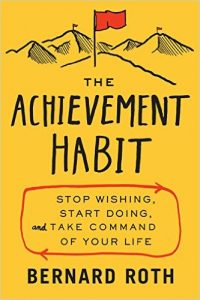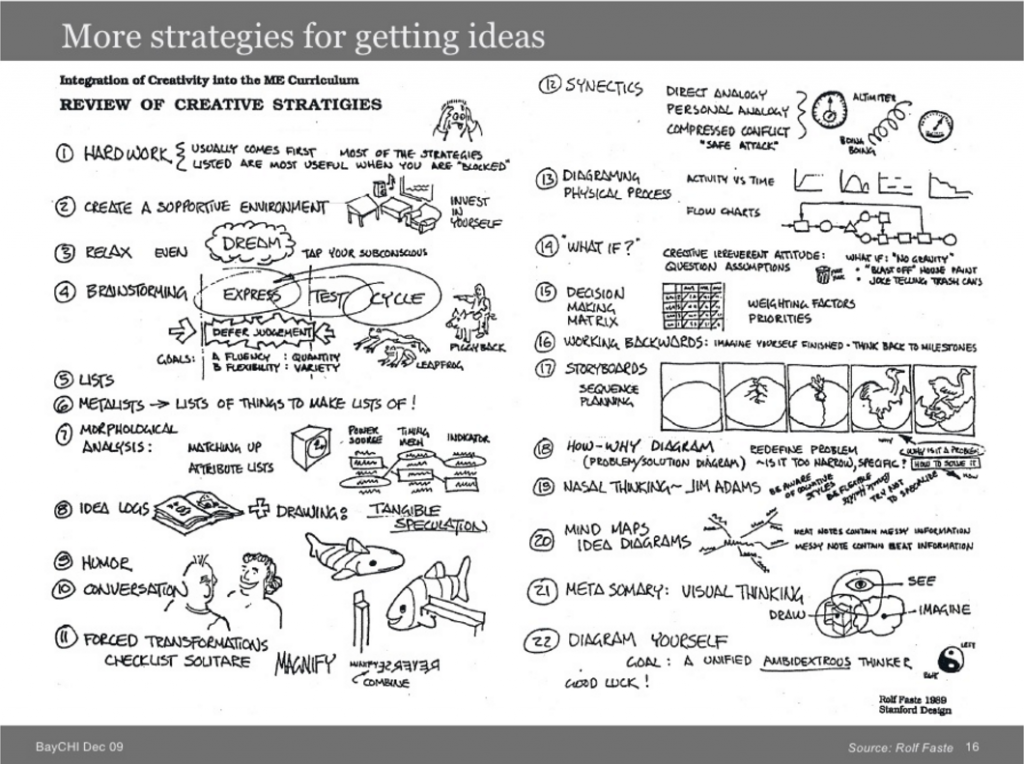This is part of an ongoing series of organizational and personal improvement book reviews. If you have read the book already, use this as a reminder of key lessons. If you have not read the book and are looking to learn and grow as a leader, this summary will share the basics.

The Achievement Habit: Stop Wishing, Start Doing, and Take Command of Your Life is a 2015 book written by Bernie Roth, one of the founders of the Institute of Design at Stanford. This is also known as the “d.school.” Design thinking has many similarities to Lean thinking and the A3 improvement process coached by our team at Lean East. The Stanford d.school steps to design thinking are:
- Empathize: think about the user (customer) and their issues.
- Define the problem: narrow down which user problem you are going to address and solve.
- Ideate: generate possible solutions.
- Prototype: develop or build your selected solution (don’t try to make it perfect).
- Test: try the solution and get feedback.
Bernie focuses this book on thought exercises and seeks to have the reader change their mindset. Many of his personal anecdotes come from teaching a class at Stanford since 1969 called “The Designer in Society” with a self-selected term project. Students must either do something they have wanted to do but never done, or handle something that is a problem in their lives. They decide on their project goal, and if they achieve the goal they pass the class.
The book is fairly easy to read and engaging through the first half. However, I lost some interest in the second half where Roth jumps from topic to topic. A few of the main ideas from the book are summarized below.
Problem-solving:
Over 99% of the time, the issue with problem-solving is we are working on the wrong problem. If you can’t solve your problem, then reframe it. For example, consider what you would do now if you had the answer to your problem.
Reasons are Bulls#%t:
We give reasons to seem “reasonable” to both ourselves and others. Stop doing it! There is never a single reason for specific behavior. Bernie uses an exercise where a partner tells you that every reason you have is a goooood reason (sarcasm intended).
Instead of justifying your actions with goooood reasons, take responsibility for your behavior and stop it. Or don’t stop doing it if it isn’t that important to you. Instead, just don’t worry about it anymore. It is usually best to admit your error and apologize without giving a BS reason.
Getting Unstuck:
Several d.school strategies are shared for getting around your obstacles when you get stuck. Check them out below!

Doing is everything:
When you are doing something, whatever obstacles come at you get handled. When trying to do something, you may still succeed. However, if you run into obstacles, you’re going to be deterred and give up. Individual mindset is important. In order to succeed, you have to have the intention and give the problem your attention. When we are just trying to do things we often come up with goooood reasons why we can’t succeed. Therefore, we don’t!
Don’t try to do things, do them.
It is easy to tell when someone is doing rather than trying. This is because you can see them getting it done. There is a bias towards action, not thinking about action.
Designing You:
Be careful about the language you use and your self-image. Speaking and thinking positively has a huge impact on your results. A number of thought exercises and group exercises are presented to force an examination of your life and thoughts.
Making Achievement a Habit:
The book’s final chapter offers a synopsis of key points:
- See problems as opportunities.
- Prototype your way to success (ready . . . fire! . . . aim).
- Keep your focus, for distractions, can be painful.
- It’s not about you. So, stop worrying about what other people may think!
- Be the cause in the matter – take responsibility for your life and choices.
If you enjoyed this summary of The Achievement Habit by Bernard Roth we encourage you to share it with your friends and colleagues!


Related Posts
The God Complex: Why We’re All Making This One Mistake
How I am Changing the Career Advice I Give My Kids
This is Never Going to Work: Getting Lean Projects Unstuck